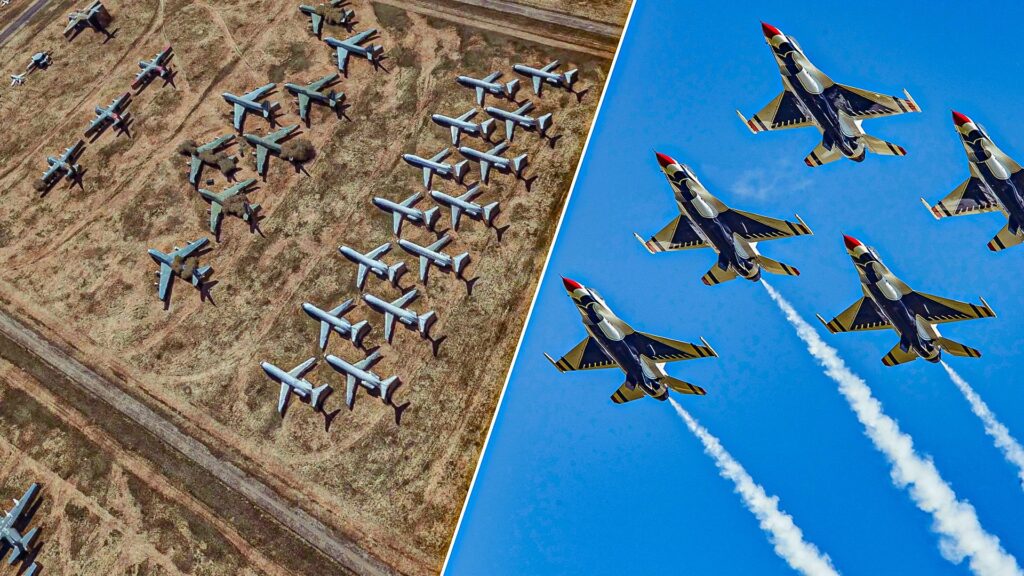
The latest data from the World Population Review has revealed the changing landscape of military air power across the globe. The report highlights that while some nations are bolstering their air forces, others, including the United States and Russia, are witnessing a decline in their total number of military aircraft. Despite these shifts, the United States maintains its position as the world’s leading air power.
The People’s Liberation Army Air Force (PLAAF) of China has significantly expanded its fleet in recent years. According to the report, the PLAAF stands as the largest air force in terms of total military aircraft, boasting over 3,200 units. This growth reflects China’s strategic focus on enhancing its military capabilities and asserting its influence in the Asia-Pacific region.
Meanwhile, the United States Air Force (USAF) has experienced a decrease in its total aircraft numbers, currently estimated at around 5,200. Although the USAF remains unmatched in terms of operational capabilities and technological advancements, the reduction in numbers has raised discussions about future readiness and modernization efforts.
The Russian Air Force is also facing challenges, with its fleet size reportedly declining to approximately 4,000 aircraft. The ongoing geopolitical tensions and military engagements have strained resources, impacting maintenance and new acquisitions.
Global Trends in Military Aviation
The trends in military aviation are not solely confined to the largest air forces. Many countries are investing heavily in upgrading their fleets or developing indigenous capabilities. Nations such as India, Japan, and South Korea are increasing their military expenditures, aiming to establish more potent air forces in response to regional threats and ambitions.
For instance, India has made considerable investments in its air force, with an emphasis on acquiring modern fighter jets and upgrading existing aircraft. The Indian Air Force is expected to grow its fleet size, which currently includes around 2,100 aircraft, as it seeks to enhance its operational readiness.
In contrast, European nations are also reassessing their military capabilities. Countries like France and Germany are collaborating on joint projects to develop next-generation fighter jets, illustrating a shift towards cooperative defense strategies within the continent.
Implications for Global Security
The evolving dynamics of military air forces have significant implications for global security. As air power continues to play a vital role in military strategy, nations are compelled to reassess their capabilities and align them with emerging threats. The disparities in aircraft numbers and technological advancements could influence geopolitical stability, particularly in contested regions.
The United States, despite its fleet reduction, retains a competitive edge through advanced technology and a robust defense infrastructure. This is critical not only for national security but also for maintaining strategic alliances.
As nations like China expand their air forces, the balance of power may shift, prompting responses from other countries. The focus on air power is likely to intensify, with nations investing in new technologies, enhanced training programs, and strategic partnerships to improve their military readiness.
In summary, the latest findings from the World Population Review underscore the dynamic nature of global military air forces. The United States continues to lead, but emerging powers and evolving strategies are reshaping the landscape of air power, with potential ramifications for international relations and security.







